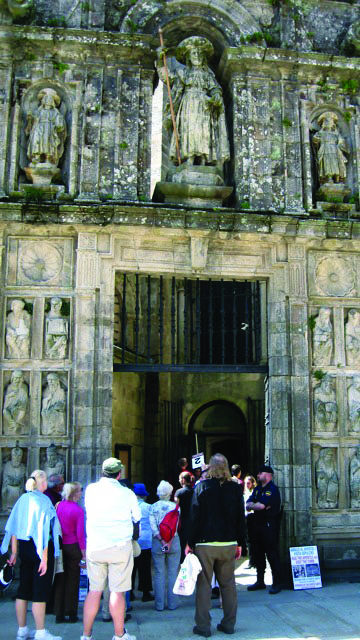
An intriguing motion picture was released in the fall, but disappeared from movie theatres. However, “The Way” may soon be available on Netflix, and it deserves a wider audience.
Martin Sheen plays Tom Avery, a Southern California ophthalmologist who becomes estranged from his only son because Daniel (played by his real son, Emilio Estevez) abandons doctoral studies to go on a pilgrimage in Europe. Daniel is killed in an accident while walking “El Camino de Santiago,” and Tom travels to France to claim his body and return it home.
A French policeman explains Daniel’s intended journey, and Tom takes Daniel’s ashes and backpack and sets out to complete the 500-mile journey in honor of his son. Along the way he meets and bonds with three pilgrims: an Irish writer, a Dutchman and a Canadian woman. Although each expresses a simplistic reason for making the trek, it becomes obvious that their motivations are actually more complex.
This beautiful film isn’t “religious” in a conventional sense, but it is definitely “spiritual,” as the characters seek to find faith and forgiveness through a centuries-old ritual.
Religious pilgrimage is an ancient tradition: It plays a part in Christianity, Sikhism and Buddhism; Islam requires that all Muslims complete “the Haj” at least once in their lives.
The pilgrimage practice seems to be getting more popular: Anglican Archbishop of Wales Barry Morgan writes, “I sense there is a renewed interest in pilgrimage – more people are embracing the chance to take time out of busy schedules to focus on their spiritual journey and visit sites made special by the prayer and devotions of generations before them.”
Last year while in Spain, I discovered how popular pilgrimages remain today. As many as 200,000 people were expected to travel the Way of St. James, arriving at the shrine in the massive 11th century cathedral of Santiago de Compostela. Whenever St. James Day (July 25) falls on a Sunday, it is declared a “Jubilee” or “Holy Year,” increasing the number of pilgrims participating. I witnessed hundreds of them in one afternoon, including a man whose head was bleeding from a fall along the way.
Most pilgrims carry a document called a “credencial” (Pilgrim’s Passport), which they purchase before leaving on their journey. This allows them to stay at dormitories along the way, having it stamped to verify their travels.
Pilgrims who complete the journey receive a “compostela,” a special certificate, if they have walked at least 100 kilometers or bicycled at least 200 kilometers. There is also a secular “certificado” for those who claim no spiritual purpose for their pilgrimage.
Many customs are associated with this ancient pilgrimage: a Pilgrim’s Mass in the cathedral where incense is burned in a giant “thurible” (incense burner), which requires several men to swing it – a scene shown in the film. Some continue their journey west to Cape Fenisterre, considered the westernmost point in Europe, and there are carnivals, street parties, concerts and fireworks.









